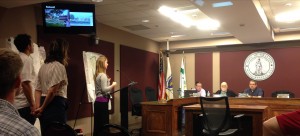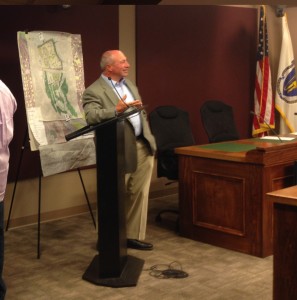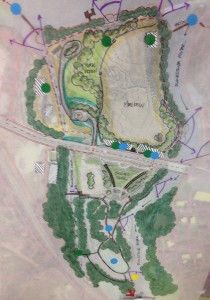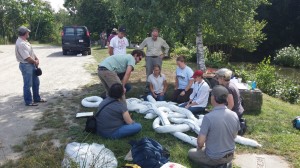by Katie Greger
What does it mean to “preserve” an ecosystem?
Land Conservation: the process of protecting natural land and returning developed land to its natural state.
Depending on the land and how much disturbance it has faced depends on the types of techniques one would approach to carry out land conservation. These techniques are as follow: preservation, restoration, remediation, and mitigation.
Preservation of the environment means that lands and their natural resources should not be consumed by humans and should instead be maintained in their pristine form.
In terms of preserving land, the idea of “pristine” land, is land that is not touched, in the sense of altering, by humans but simply admired and enjoyed for its beauty. Many conservationists believe the environment should be used as a form of enjoyment and pleasure and not as resource for goods.
Restoration is the process of returning ecosystems and communities to their original natural conditions.
For restoration to occur scientists need to examine the land to determine what the health of the land should be. Scientists research the historical conditions of the ecosystem to return it back to the state before humans touched it. This could involve introducing native animals, planting native plants, restoring waterways to their natural path, and removing human infrastructure.
Remediation is the process of cleaning a contaminated area using relatively mild or nondestructive methods.
The main goal of remediation is to clean and restore the contaminated area while causing as little disturbance or harm as possible. Techniques for remediation follow different methods including chemical, physical, and biological methods to remove contamination.
Bioremediation falls under this concept of remediation. What it is, is the use of naturally occurring or purposefully introduced organisms to break down pollutants.
Mitigation is the process of replacing a degraded site with a healthy site that is of equal ecological value in a different location.
The purpose of this is to compensate for destroying one area by purchasing or creating a new area that is of equal ecological value.
A Pristine environment in the America’s is an environment pre-1491, pre-colonialists. It is believed that this notion is wrong. People have been “touching” the environment/landscape for as long as they have been on the earth. However, there are different forms of land manipulation that can aid in creating a healthy environment rather than a destructive/negative environment.
The Native Americans manipulated the land in such a way to make the land more useful for them. They would use fire to create more land/space for large game, which would aid them in hunting. They domesticated plants for agricultural purposes, as well as, domesticating some animals like turkeys. The Native Americans manipulated the land to better their chances of food, but did not invade the landscape, they became a part of the landscape. They were nomadic, moving with the seasons, and so, had very little to no accumulation of things. They used resources when they needed to.
When the colonists came to the Americas they viewed land in a drastically different way. They took resources from the land as their way of land manipulation, to be used in a varying of ways. They cut down trees to use for shelter and to create space for agriculture. They hunted for food, as well as, to sell. They had a concept of accumulation and a need for a market which influenced their view on the environment. They took a lot of natural resources for personal gain. There motto was excess because they saw the resources as infinite.
The Colonists and Native Americans have different notions of land use, neither is right or wrong necessarily. Each viewed and manipulated the land as a way to live, but saw how to live in very different ways. Understanding that “Pristine” is a term that shouldn’t be used with talk about the environment, especially wilderness, is necessary for policy making and discussions.
I’d like to return back to the definition of Preservation, lands and their natural resources should not be consumed by humans and should instead be maintained in their pristine form. The idea of “pristine” is a debated topic. The idea of pristine land is subjective, it should not be used as a form for creating guidelines as it is an inaccurate term for environments because there is no such thing as a “Pristine” Environment. An environment should have terminology created around whether the environment is healthy.
What makes a healthy environment is determined by the amount of toxins in the air, soil and water. To determine the amount of toxins tests are done. The ways in which to then treat unhealthy environments vary. The Living Systems Laboratory is an example of a system that is treating an unhealthy environment. The LSL is taking the polluted water from the Blackstone River/Canal and putting it through an eco-machine, that uses organic matter, such as, aquatic plants and mushrooms, to remove toxins. The LSL is trying to help the environment of the Blackstone River/canal by making it healthy again. The health of the environment is at stake because of human industrialization. Industrialization and the creation of pollutants are creating unhealthy environments.
Sources:
Cronon, William. Changes in the Land: Indians, Colonists, and the Ecology of New England. New York: Hill and Wang, 1983.
Cunningham, Margaret. “Land Conservation.” Study.com. Accessed May 01, 2016. http:// study.com/academy/lesson/land-conservation-preserving-and-restoring-ecosystems.html.
Environmental Health. (n.d.). Retrieved May 01, 2016, from https://www.healthypeople.gov/ 2020/topics-objectives/topic/environmental-health
Vale, T. R. (2002). Fire, native peoples, and the natural landscape. Washington, DC: Island Press.







